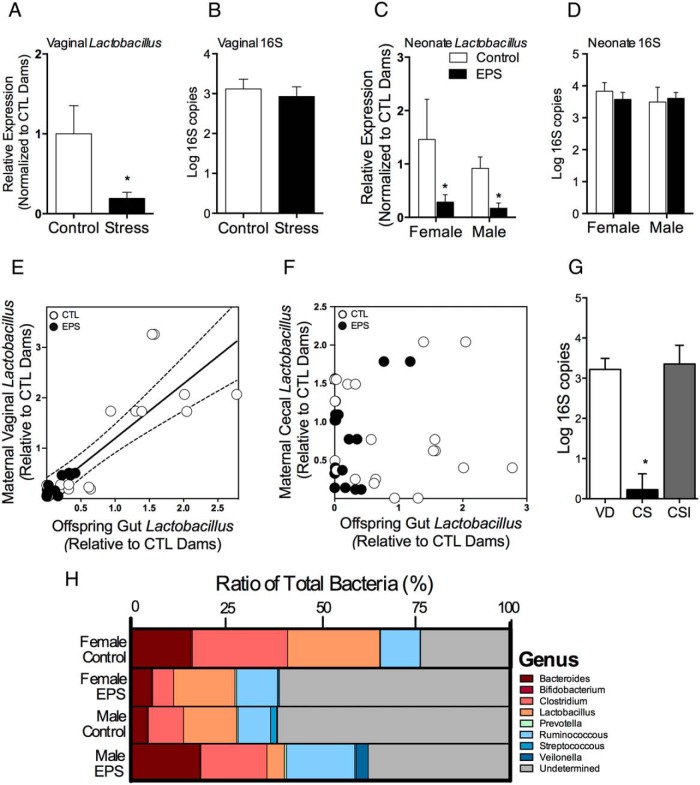Figure 2.
Stress early in pregnancy altered maternal Lactobacillus transmission to offspring and more broadly disrupted neonate gut microbiota composition. A, Vaginal Lactobacillus abundance at PN2 was significantly decreased in dams exposed to EPS (n = 8) compared with control dams (n = 13). B, No difference in overall PN2 vaginal microbial census was noted. C, Comparison of Lactobacillus abundance in the PN2 neonate gut from control (n = 13) and offspring exposed to EPS (n = 8). Asterisks indicate a main effect of treatment by univariate analysis. D, No difference in PN2 neonate gut microbial census was noted. E, Maternal vaginal Lactobacillus levels were significantly positively correlated with neonate distal gut Lactobacillus levels. Solid line signifies the best-fit line from a linear regression, and the dotted lines signify the 95% confidence interval (CI) for that best fit line. F, No relationship was noted between the maternal fecal Lactobacillus and offspring gut Lactobacillus levels. G, Disrupting transmission of maternal vaginal microbiota by cesarean delivery significantly reduced total bacterial count in the PN2 neonate gut, whereas seeding cesarean delivered offspring with maternal vaginal fluid recovered total bacterial count compared with VD offspring. VD, vaginally delivered; CS, non-inoculated cesarean delivered; CSI, inoculated CS (n = 4–5 offspring/mode of delivery). Asterisks indicate a significant difference between CS offspring and all other groups determined by univariate analysis. H, Effect of EPS on selected bacterial genera in the PN2 neonate gut. In control offspring, a clear sex difference in microbiota composition was noted, whereas EPS disrupted microbiota composition disrupted this sex difference with male EPS offspring showing increased colonization by strict anaerobes and a microbiota profile more similar to control females (n = 8 per sex and treatment). *, P < .05.

